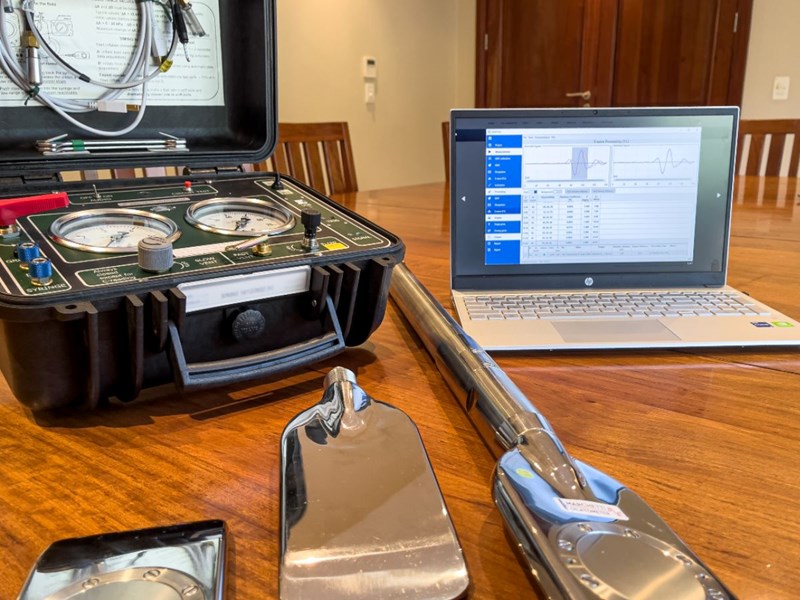Dilatometer Testing

When building on, or interacting with the ground, understanding its geotechnical properties is crucial. Enter the flat plate dilatometer (DMT) and seismic dilatometer (SDMT) tests - two in-situ techniques that geotechnical engineers use to assess soil behaviour.
DMT is a stainless-steel blade with a flat circular steel membrane that is advanced, into the soil, using a standard CPT pusher rig or a drill rig. The circular membrane gets inflated, horizontally, by using air or nitrogen gas. The pressure required to inflate the membrane horizontally against the soil is recorded and with corrections, can provide valuable information such as horizontal stress index, over-consolidation ratio and undrained shear strength.
The benefits of DMT testing are plenty. Firstly, it directly measures soil modulus, a key parameter in settlement and deformation analysis. This makes DMT ideal for foundation design, where stability under load is paramount. Secondly, DMT provides continuous data throughout the test depth, offering a detailed profile of soil properties. This is particularly useful for layered soil formations, where traditional grab samples might miss crucial variations.
The SDMT builds on the DMT's strengths by incorporating a seismic module. This module measures the shear wave velocity of the soil. Shear wave velocity is then used to determine the small strain shear modulus of the soil, another crucial parameter for understanding soil behaviour.
The combined power of DMT and seismic measurements makes SDMT a powerful tool. It provides a more comprehensive picture of the soil's response to both static (constant) and dynamic (vibratory) forces. This additional information is valuable for infrastructure projects in earthquake-prone regions or those involving heavy machinery.
In essence, DMT and SDMT tests act like windows into the hidden world beneath our feet. By measuring soil's response to pressure and seismic waves, they equip engineers with the knowledge to design safe and stable structures, ensuring the success of construction projects.
Plot 28 Central Road
Sunrella, Lanseria
Gauteng
South Africa
Tel. +27 (0)11 966 7760
Email. info@geogroup.co.za